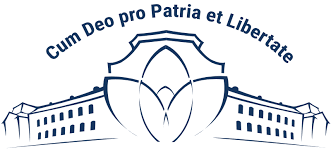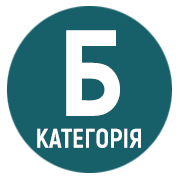INVESTIGATION OF LAND COVER USING AUTOMATED IMAGE ANALYSIS METHODS IN THE VISIBLE SPECTRUM IN A HILLY STUDY AREA (UKRAINE, BEREHOVE HILLS)
DOI:
https://doi.org/10.32782/2786-5843/2024-3-7Keywords:
Berehove Hills, land cover, land use, satellite image analysis, UAV.Abstract
The relevance of the study: in Ukraine, as in the countries of the European Union, most research related to land cover is based on multi- and hyperspectral imagery, but there is no effort to achieve high geometric resolution. In this paper, we attempted to achieve higher spatial resolution through the automated processing of images in the visible spectrum. The subject of the research: satellite images and UAV images. The purpose of the research: in this paper, we investigated changes in land cover/land use in the Berehove Hills region from 2012 to 2017. Research methods: in the research, we utilized satellite images with sub-meter spatial resolution as a basis. To minimize spatial discrepancies between the satellite images, we georeferenced the images. Due to relatively significant extent of the area, it was advisable to employ automated procedures. The land cover elements were detected in the eCognition software environment using multi-phase segmentation. In the hilly area, there are numerous elements whose detection using segmentation did not achieve the accuracy satisfactory for us. Such elements included linear features (roads) and vineyards. Their delineation/vectorization was performed manually. Following the segmentation, we proceeded with the classification of the elements. In this research, we used 12 land cover categories. The classification was also carried out using eCognition. For categorization, we designated training areas that maximally represented the land cover types relevant in the study area. After exporting the categorized segments, we proceeded with verification, primarily conducting topological control. For the geometric and content verification of segmentation and classification, we used orthomosaics created with UAV assistance. The results of the study: as a result, we obtained two polygon maps reflecting the land cover/land use situation of the study area in 2012 and 2017. We quantified the map data and illustrated the changes that occurred during the examined time frame on a separate map. Practical significance of the study: with the method outlined here, we significantly increased the accuracy of automated processing. Conclusions: during the period from 2012 to 2017, land cover changes occurred on nearly 6% of the study area. The largest positive change was measured in the forest category, which was due to the abandonment of cultivated areas and natural reforestation.
References
Смірнов Я.В. Аналітичний огляд європейських систем класифікації земельних ресурсів. Географія та туризм. 2012. 22, c. 291–300.
Зєлик Я.І., Куссуль Н.М., Шелестов А.Ю., Яйлимов Б.Я. Аналітичний огляд європейських проектів LUCAS і CORINE для моніторингу та валідації земного покриву і землекористування на основі супутникових та наземних спостережень та досвід картографування земного покриву в Україні. Український журнал дистанційного зондування Землі. 2017. № 12. С. 10–36.
Аналітична доповідь «Перспективи використання супутникової інформації для моніторингу досягнення цілей сталого розвитку України». Інститут космічних досліджень НАН України і ДКА України. Київ, 2020. 88 c.
Шерстюк Д.М., Ільєнко Т.В. Використання супутникових даних як інструмент у моніторигу в збалансованому природокористуванні. Збалансоване природокористування: традиції, перспективи та інновації. Частина 1 : матеріали Міжнародної науково-практичної конференції, м. Київ, 18–19 травня, 2023 р., c. 169–170.
Izsák Tibor. A Beregszászi járás természeti földrajza. PoliPrint Kft, Ungvár. 2007. 51 p., 11–23.
Kinárov K., Túri Z.K., Gönczy S. Űrfelvétel-alapú változásvizsgálatok a Beregszászi-dombságon. X. Térinformatikai Konferencia és Szakkiállítás. Pp. 139–146. Debrecen, 2019. május 23–24. ISBN:978-963-318-054-9.
Kinárov K., Túri Z.K., Gönczy S. A földhasználat-változás elemzése egy kárpátaljai mintaterületen (Beregszászi-dombság). X. Térinformatikai Konferencia és Szakkiállítás, poszter. Debrecen, 2019. május 23–24.
Mika J., Utasi Z., Bíró Cs., Pénzesné Kónya E. Műholdakról távérzékelt adatok feldolgozása és hasznosítása. Eszterházy Károly Főiskola, Eger. 2011. 100 p.
Лялько В.І., Шпортюк З.М., Сахацький О.І., Сибірцева О.М. Класифікація земного покриву Карпат з використанням наземного хлорофільного індекса та позиції червоного краю за даними відоспектрометра MERIS. Український журнал дистанційного зондування Землі, 2014. 1, c. 30–34.
Ліщенко Л.П. Моніторинг теплового поля поверхні колишніх виробничих зон і промислових об’єктів м. Київ за супутниковими даними. Український журнал дистанційного зондування Землі, 2020. 25, c. 17–27. doi: 10.36023/ujrs.2020.25.172
Краснопір О.В. Аналіз ландшафтного різноманіття Українського Полісся за 2001–2012 рр. на основі класифікованих космічних знімків EOS/MODIS. Український журнал дистанційного зондування Землі, 2015. 6, c. 14–23.
Gönczy S. Kárpátalja magmás komplexumai (Adattár, ősföldrajz és esettanulmányok). II. Rákóczi Ferenc Kárpátaljai Magyar Főiskola kiadványa. „RIK-U” kiadó, Ungvár-Beregszász. 2016. 190 p. ISBN 978-617-7404-13-1.
Титов Э.М., Мацкив Б.В., Титова В.И., Белик Т.И. Геологическая карта Закарпатья, M 1:200 000. СЕВУКРГЕОЛОГИЯ, Закарпатская Геологическая Экспедиция. 1979.
Chintan P. Dave, Rahul P. Joshi, Srivastava S.S. A Survey on Geometric Correction of Satellite Imagery. International Journal of Computer Applications, 2015. 116. Pp. 24–27. doi: 10.5120/20389-2655
Jaud M., Rouveure R., Faure P., Monod. M-O. Methods for FMCW radar map georeferencing. ISPRS Journal of Photogrammetry and Remote Sensing, 2013, 84, pp. 33–42. doi: 10.1016/j.isprsjprs.2013.07.002
Incze J. A területhasználat változásai és jelentőségük a táj antropogén felszínfejlődésében a tokaji Nagyhegy példáján. Debreceni Egyetem, Debrecen. 2012. 53 p.
Varbla S., Ellmann A., Puust R. Centimetre-range deformations of built environment revealed by dronebased photogrammetry. Automation in Construction, 2021. 128, 103787. Pp. 1–12. https://doi.org/10.1016/j.autcon.2021.103787
Túri Z.K. A tájszerkezet geoinformatikai módszereinek elemzése alföldi mintaterületen. Debreceni Egyetem, Debrecen. 2015. 156 p.
Moreira E.P., Valeriano M.M. (2014). Application and evaluation of topographic correction methods to improve land cover mapping using object-based classification. International Journal of Applied Earth Observation and Geoinformation, 2014. 32, pp. 208–217. doi: 10.1016/j.jag.2014.04.006
Lassalle G., Ferreira M.P., Cué La Rosa L.E., Roberto de Souza Filho C. Deep learning-based individual tree crown delineation in mangrove forests using very-high-resolution satellite imagery. ISPRS Journal of Photogrammetry and Remote Sensing, 2022. 189, pp. 220–235. https://doi.org/10.1016/j.isprsjprs.2022.05.002
Ikokou G.B., Smit J. Optimal segmentation parameters prediction using a orthogonal decomposition approach for geographical object based classification of urban areas. The Egyptian Journal of Remote Sensing and Space Science, 2021. 24,3,2, pp. 501–507. https://doi.org/10.1016/j.ejrs.2021.04.001.
Liu B., Song W. Mapping abandoned cropland using Within-Year Sentinel-2 time series. CATENA, 2023. 223. 106924, pp. 1–17. https://doi.org/10.1016/j.catena.2023.106924
ukravtodor.gov.ua (A letöltés ideje 2019. április 20).
Ranchin T., Naert B., Albuisson M., Boyer G., Astrand P. An automatic method for vine detection in airborne imagery using wavelet transform and multiresolution analysis. Photogrammetric Engineering and Remote Sensing, 2001, 67 (1), pp. 91–98.
Taşdemir K., Milenov P., Tapsall B. A hybrid method combining SOM-based clustering and objectbased analysis for identifying land in good agricultural condition. Computers and Electronics in Agriculture, 2012. 83, pp. 92–101. doi: 10.1016/j.compag.2012.01.017






